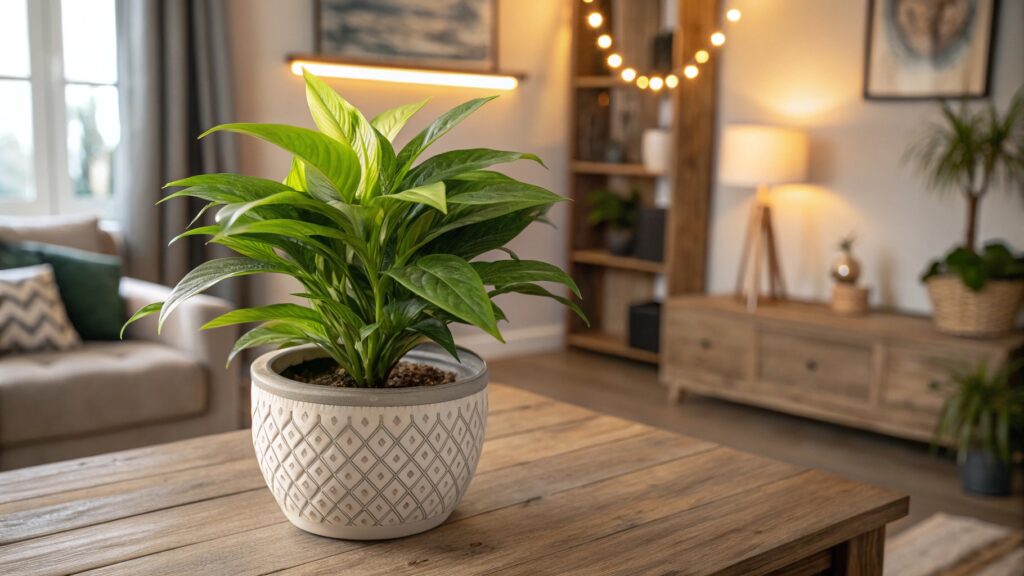Artificial plants have become a popular choice for home and commercial decorating, bringing greenery into your space without having to water, prune, or worry about sunlight. However, if you’re new to the world of artificial plants, your home decor can leave a lot to be desired.
As we all know, there’s a fine line between tasteful and tacky. There’s a right way to use artificial plants, and there’s a very wrong way to use them. To ensure your artificial greenery looks its best and doesn’t ruin the overall aesthetic, here are some common mistakes to keep in mind when decorating with faux plants. Let’s dive in.
Choosing Unrealistic-Looking Plants
One of the most fundamental mistakes when decorating with artificial plants is choosing artificial plants that don’t look realistic. Poor quality materials, unnatural colors, or poorly designed leaves can make your plants look fake at first glance. Yes, such low-quality artificial plants may save money initially, but they will ruin the aesthetic in the long run.

The purpose of artificial plants is to create the illusion of realism, not to advertise their artificiality. So, when choosing artificial plants, pay close attention to the texture, color variation, and overall shape of the leaves. Realistic artificial plants mimic the imperfections and natural curves of living plants. For example, high-quality artificial plants, like artificial ferns, have slightly uneven edges and a range of green tones, just like real ferns.
Ignoring Scale and Proportion
Scale and proportion play a vital role in the placement of artificial plants. Choosing an inappropriately sized plant can disrupt the room's sense of balance. According to the large artificial plants’ tips, if you place a large artificial palm tree in a small corner of a small room or place a miniature artificial succulent on a huge coffee table, all can create a visual imbalance.

So, when styling artificial plants, consider the size of the space within it. Always remember that you should match the scale of the artificial plant to the area. For example, you can put a tall and eye-catching artificial olive tree in a large living room, which can serve as a focal point. In contrast, smaller artificial plants are better suited to be placed on desks or narrow shelves.
Neglecting Decor Harmony
Artificial plants are not standalone decorations. They are part of the overall aesthetic of your home and can enhance the ambiance of a space if styled correctly. So, when choosing artificial plants, consider whether they complement the overall style and color scheme of the room.

Whether it’s a modern minimalist space, a rustic farmhouse, or a bohemian area, the artificial plants you choose should enhance the existing decor theme. For example, if you want a casual setting, you could feature artificial hanging plants with creeping vines and elongated leaves. If they are isolated and not connected to other items, they will end up looking casual—almost like an afterthought.
Placing Artificial Plants in Perfect Symmetry
Though symmetry can be visually appealing in some cases, natural plants don’t grow symmetrically, but in an organic, asymmetrical pattern. So, relying too much on symmetry when placing artificial plants can make your decor look stiff and unnatural. Try to replicate this growth pattern by arranging artificial plants in a more random, but still balanced way.

You can group artificial plants of different sizes together, with some plants slightly forward and others further back. In this way, you can create a more dynamic and natural-looking display and add depth and interest to a space.
Overloading Spaces With Faux Plants
When it comes to faux plant decor, less is more. While it’s tempting to fill your home with tons of greenery, placing too many faux plants can create a cluttered and overwhelming feel. Rather than filling every corner with faux plants, you should strategically place a few key plants around your space.

Focus on creating a few well-curated displays. For example, use a dramatic faux green wall to make a statement and complement it with a few smaller potted plants on a coffee table or bookshelf. This method of integrating artificial plants ensures that the beauty of each plant is highlighted and doesn’t get lost in a sea of greenery.
Neglecting Cleaning for Fake Plants
Just like any other decorative item, artificial greenery can accumulate dust, so it also needs to be cleaned regularly to maintain its appearance. Over time, dust can accumulate on the leaves and stems, making the plant lose its luster and appear cheap and tacky.

Cleaning artificial plants is a simple part of artificial plant maintenance. Wipe artificial plants with a soft cloth or feather duster regularly, and wipe with a damp cloth as needed. Time it well to clean the leaves before they accumulate too much dust and dirt. This way, you can prevent accumulation and ensure your artificial foliage remains spotless.
Placing Faux Plants in Dark Corners
Unlike real plants, artificial plants don’t need sunlight to survive. Do you think it is right to put them in a dark corner? The answer is absolutely wrong. Because placing them in a dark corner can make them look like they aren’t real.

Instead, placing them in a location with sunlight will enhance their realism. If you want to place an artificial plant in a corner, make sure there is some form of ambient light, such as a nearby lamp or window. Then the details and colors of the plants will be shown off.
Not Complementing with Natural Elements
To create a more realistic decor, it’s necessary to complement artificial plants with natural elements. Because artificial plants only look more realistic in the right setting. You can add natural elements like real dirt, stones, leaves or twigs in it or change containers.

For example, placing artificial plants in clay pots or on wooden trays can add a touch of warmth and realism. You will see combining artificial plants with natural elements can help bridge the gap between artificial and real plants and make them look more natural.
Skipping Repotting Artificial Plants
Many people plant artificial plants in ordinary pots. In fact, fake plants can add personality to your home just like real plants by repotting and adding soil. First, you can choose decorative pots that coordinate with your home's aesthetic. Then, consider adding decorative fillers such as pebbles or moss to add texture.

At the same time, to mimic the look of real plants, you can put some real dirt on the pots of fake plants. This simple operation of potting artificial plants can give people a more natural feel.
In conclusion, artificial plants open up a world of creative possibilities. If you want to create beautiful and natural décor, avoid these common mistakes when decorating with artificial plants. Then you will be professional when design the artificial plants. If you want to know more about it, feel free to contact us.



